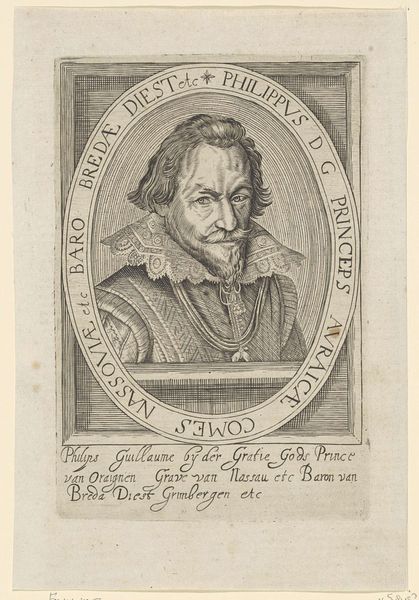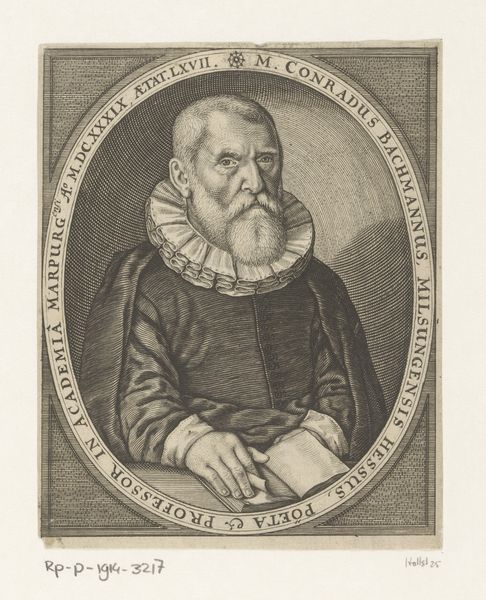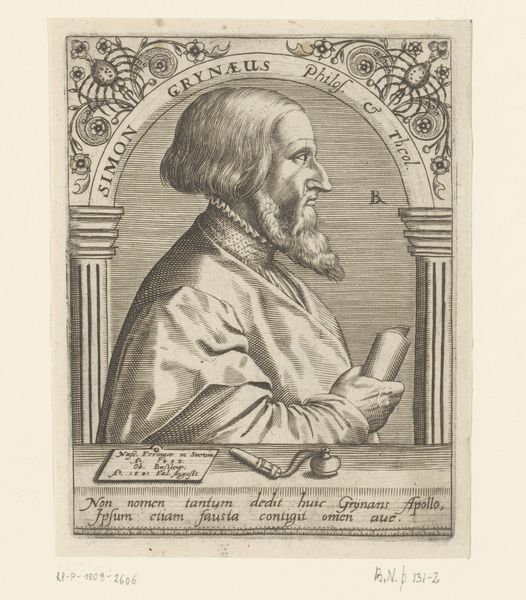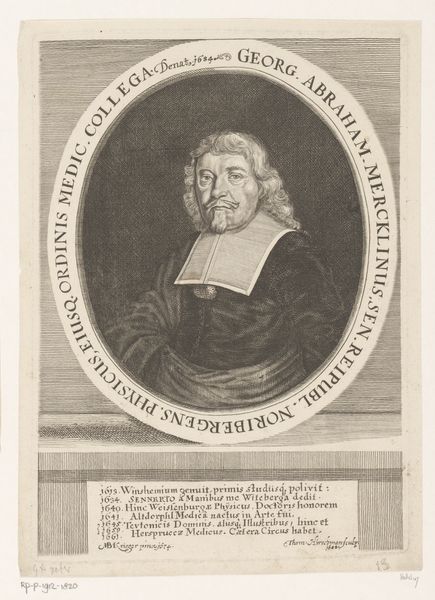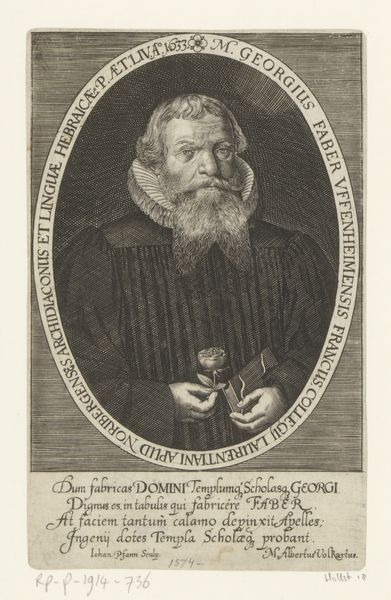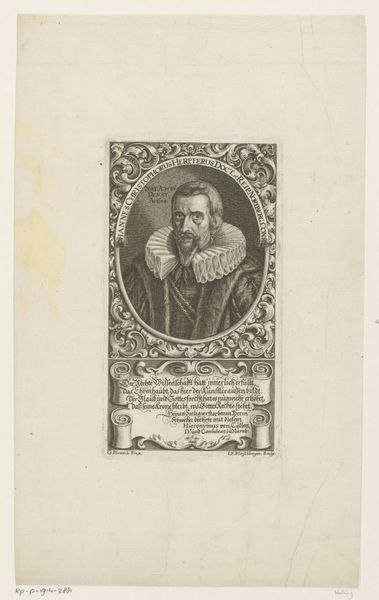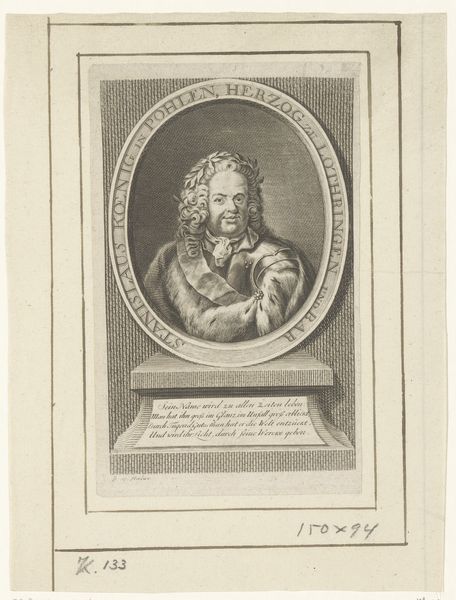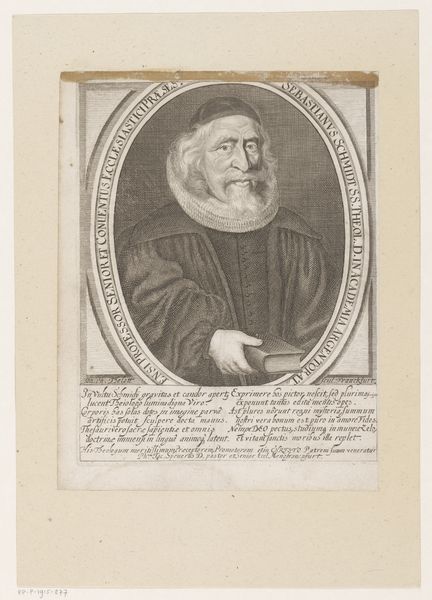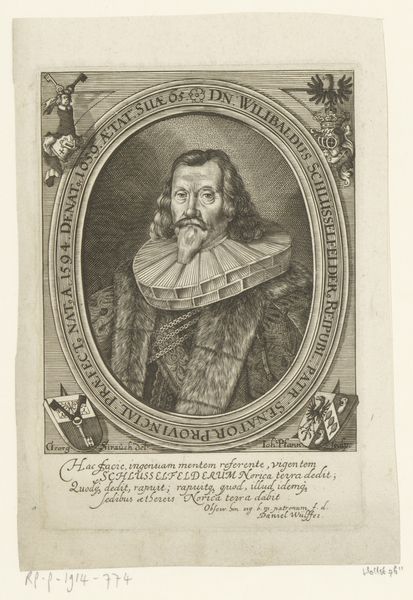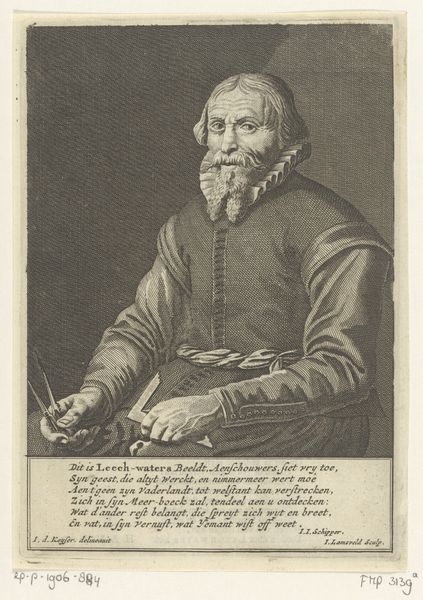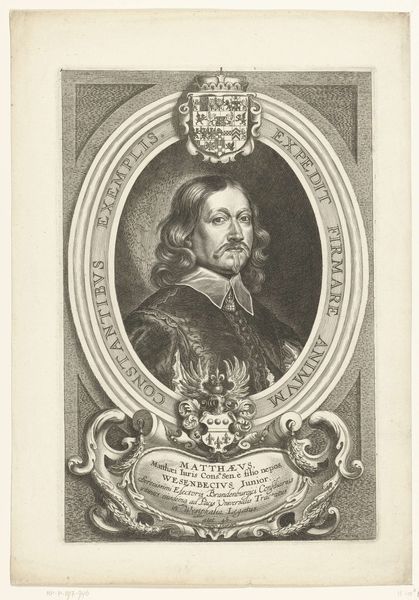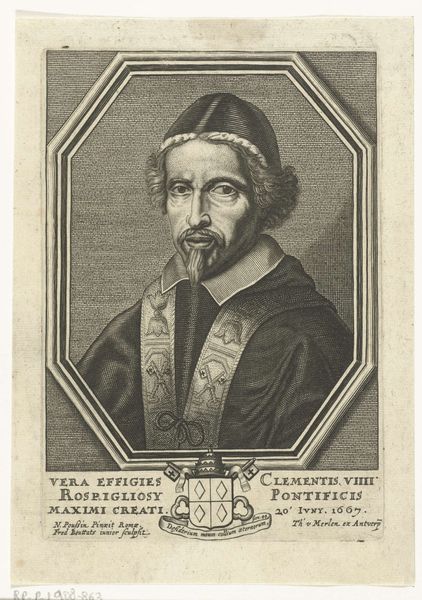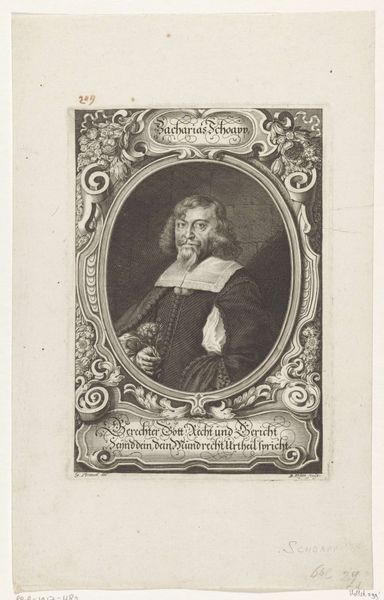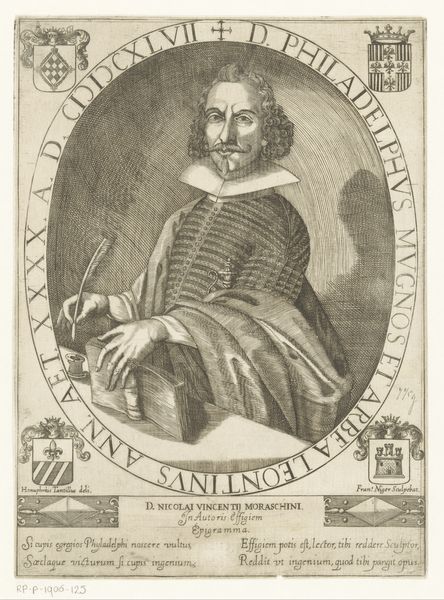
print, engraving
#
portrait
#
baroque
# print
#
old engraving style
#
engraving
Dimensions: height 121 mm, width 76 mm
Copyright: Rijks Museum: Open Domain
This is J. van Trigt's portrait of Aernout van Geluwe, rendered in printmaking – a medium perfectly suited to the subject. Printmaking, unlike painting or sculpture, relies on indirect production. Van Trigt created a matrix, most likely an engraved metal plate, from which an image can be repeatedly impressed. It is ideally suited to capturing Geluwe, a controversial theologian, whose ideas also circulated widely. Notice the inscription below the portrait. Consider the qualities of line that define the image. Engraving requires a deliberate, even forceful action, pushing a tool through resistant metal. Look closely at Geluwe’s face and you’ll see how the controlled, parallel lines create a sense of volume and texture. This is a technique that mirrors the dissemination of Geluwe’s beliefs. The printmaking medium is far from neutral. The image's inherent qualities of production imbue the portrait with social and cultural significance.
Comments
No comments
Be the first to comment and join the conversation on the ultimate creative platform.
